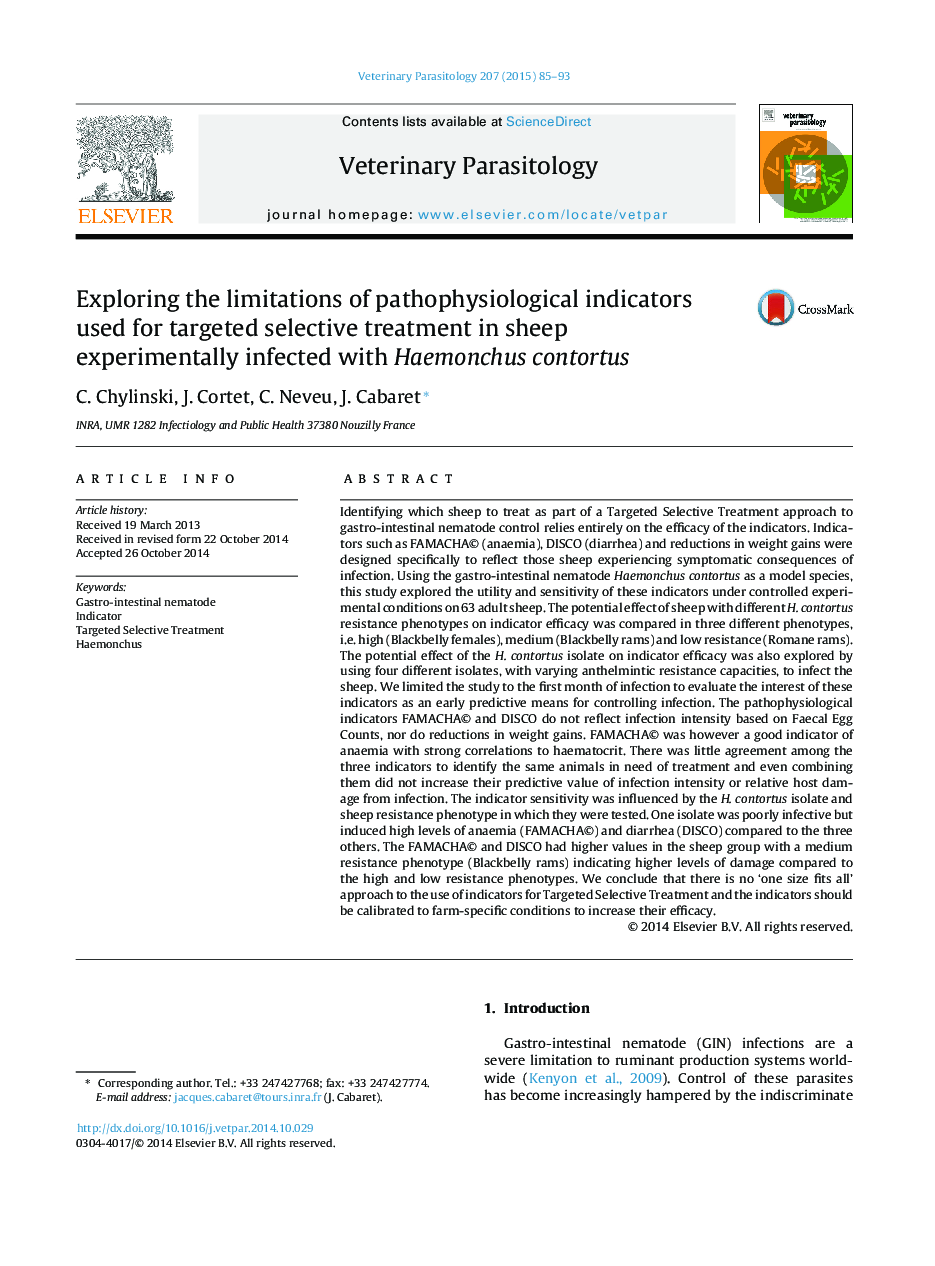| کد مقاله | کد نشریه | سال انتشار | مقاله انگلیسی | نسخه تمام متن |
|---|---|---|---|---|
| 5802872 | 1555677 | 2015 | 9 صفحه PDF | دانلود رایگان |

- The value of pathophysiological indicators was assessed in highly, medium and low resistant sheep during the first month of infection. The Famacha and Disco indicators were highest in the medium infected group.
- These indicators did vary with the isolate of Haemonchus contortus used for the infection. The one with lowest infectivity had the highest impact on indicators.
- The indicators were not effective during the first month of infection and thus cannot be used as an early alert for worm control.
Identifying which sheep to treat as part of a Targeted Selective Treatment approach to gastro-intestinal nematode control relies entirely on the efficacy of the indicators. Indicators such as FAMACHA© (anaemia), DISCO (diarrhea) and reductions in weight gains were designed specifically to reflect those sheep experiencing symptomatic consequences of infection. Using the gastro-intestinal nematode Haemonchus contortus as a model species, this study explored the utility and sensitivity of these indicators under controlled experimental conditions on 63 adult sheep. The potential effect of sheep with different H. contortus resistance phenotypes on indicator efficacy was compared in three different phenotypes, i.e. high (Blackbelly females), medium (Blackbelly rams) and low resistance (Romane rams). The potential effect of the H. contortus isolate on indicator efficacy was also explored by using four different isolates, with varying anthelmintic resistance capacities, to infect the sheep. We limited the study to the first month of infection to evaluate the interest of these indicators as an early predictive means for controlling infection. The pathophysiological indicators FAMACHA© and DISCO do not reflect infection intensity based on Faecal Egg Counts, nor do reductions in weight gains. FAMACHA© was however a good indicator of anaemia with strong correlations to haematocrit. There was little agreement among the three indicators to identify the same animals in need of treatment and even combining them did not increase their predictive value of infection intensity or relative host damage from infection. The indicator sensitivity was influenced by the H. contortus isolate and sheep resistance phenotype in which they were tested. One isolate was poorly infective but induced high levels of anaemia (FAMACHA©) and diarrhea (DISCO) compared to the three others. The FAMACHA© and DISCO had higher values in the sheep group with a medium resistance phenotype (Blackbelly rams) indicating higher levels of damage compared to the high and low resistance phenotypes. We conclude that there is no 'one size fits all' approach to the use of indicators for Targeted Selective Treatment and the indicators should be calibrated to farm-specific conditions to increase their efficacy.
Journal: Veterinary Parasitology - Volume 207, Issues 1â2, 15 January 2015, Pages 85-93